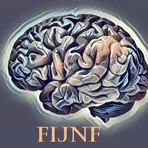Clinical, Laboratory and Endoscopic Findings of Corrosive Injuries in Children Short title: Corrosive Injuries in Children
Keywords:
Corrosive injuries; Caustic ingestion; Corrosive agents; Pediatric Gastroscopy; Pediatric emergencyAbstract
Background and aim: Caustic substance ingestion (CSI) usually occurs accidental in children or voluntary in suicidal adolescents. The tissue damage depends on type of corrosive chemicals, location of injury, duration, and amount. Endoscopy still remains as a reliable and gold standard procedure to evaluate the tissue injury. Thus, we aimed to compare the clinical, laboratory and gastroscopic findings of children presented with corrosive substance ingestion in relation with the ingested corrosive substance type in our study.
Material and Method: One hundred forty-one children and adolescents (62 female, 79 male) presented with CSI history within 24 hours, were evaluated retrospectively. Patients' demographic characteristics, ingested type and form (acid or base) of corrosive chemicals, gastroscopic findings, laboratory results were recorded and compared.
Results: The mean age was significantly higher in female patients (3,60±3,81) than male patients (2,27±2,89) (p=0,000). CSI prevalence (69.5%) was peaked in the 0-3 age group. Of the patients 84,4% presented with no symptom. Bleacher was the most common corrosive substance (31.9%), followed by rinse aid (16.3%) and other substances (14.9%). 65,2% of CSIs were caused by alkaline substances, and 18,4% by acidic agents. According to the gastroscopy findings underlying pathology was detected in 31,9% (n=45) of the cases. The stage I corrosive esophagitis was the most common pathology with a rate of %51,1. There were no statistically significant differences found according to the ingested form of corrosive agents [acid (34,6%) vs. base (27,2%)] between the patients with negative and positive baseline gastroscopy findings. But the mean value of neutrophile/lymphocyte ratio was statistically higher in the cases with ingested alkaline corrosive agents (0,96±0,80) than patients with ingested acidic corrosive agents (0,85±1,06) (p=0,016).
Conclusions: The findings of the present study suggest that elevated the neutrophil-lymphocyte ratio would improve diagnostic accuracy in cases with CSI. Therefore widely available, simple, minimally invasive and cost-effective hematological parameters suggest potential clinical benefits in cases with caustic injury. Furthermore, since ingestion of caustic agents is simply preventable issue in children, appropriate public education programs should provide by governments.
Published
Issue
Section
License
Copyright (c) 2024 Current Educational Research

This work is licensed under a Creative Commons Attribution-NonCommercial 4.0 International License.






